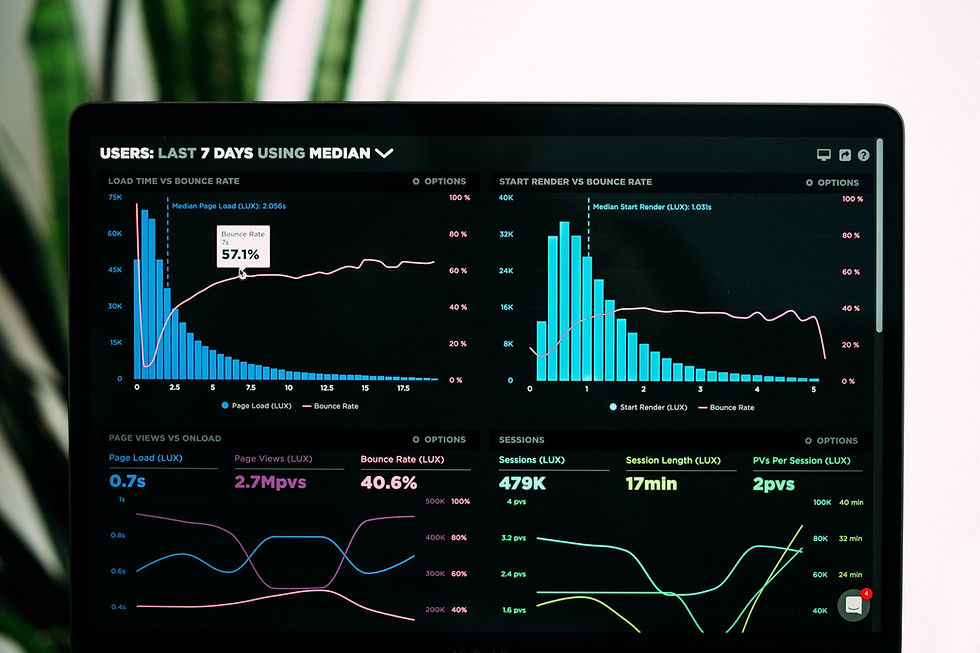Why Data-Driven Marketing Will Dominate This Decade
- INDU PRAKASH SENGAR
- Jul 30
- 3 min read

The Problem With Traditional Marketing? Too Much Guessing.
Let’s be real—there was a time when marketing was mostly built on gut feelings, best guesses, and a whole lot of “hope this works.”
But in 2025, the game has changed.
Brands that still rely on intuition alone are falling behind. Meanwhile, those embracing data-driven marketing are cutting waste, scaling faster, and delivering what their audience actually wants.
This isn’t just a trend—it’s the blueprint for growth in the next decade.
So let’s unpack what data-driven marketing really means, why it matters now more than ever, and how you can start using it to outsmart (and outsell) the competition.
What Is Data-Driven Marketing?
At its core, data-driven marketing means using real data—not opinions—to make smarter decisions.
That includes:
Website analytics
User behavior
Ad performance
Customer demographics
Purchase history
Email engagement
A/B test results
Social media metrics
Instead of saying “this should work,” you say, “this is working—and here’s proof.”
We use this every day at Digiternal Media. Whether we’re building a full-funnel strategy or launching a retargeting campaign on Meta, data is the foundation of every move we make.
Why It Matters More Than Ever in 2025
In this decade, there are three major shifts happening in marketing—and all of them point toward one thing: data is power.
1. Consumers Are More Complex
People don’t just see one ad and buy. Their journey now spans:
Multiple platforms
Dozens of touchpoints
Research, reviews, comparisons
Emotional and logical decisions
With data, you can track their behavior across this journey and meet them where they are—not where you assume they are.
That’s exactly how we grew a startup’s traffic by 480%—yes, you read that right—in this real-world case study.
2. Budgets Are Tighter, Expectations Are Higher
In a tough economy, wasting ad spend isn’t an option.With platforms like Google Analytics and Looker Studio, you can now see:
Which campaigns are working
Where you’re losing leads
What content actually drives sales
This level of insight means you can make every dollar count.
3. AI and Automation Need Good Inputs
AI tools are revolutionizing the marketing space (we dive into that in this breakdown of AI in digital marketing), but here’s the kicker:
AI is only as good as the data it’s fed.
If you want smart automation, personalized experiences, and dynamic funnels, you need clean, accurate, and actionable data.
How to Start Using Data Like a Pro
If the term “data-driven” sounds overwhelming, don’t worry. Here’s a practical breakdown of how to actually implement it in your workflow:
1. Track the Right Metrics
Focus on what matters:
Website: bounce rate, time on page, conversion rate
Email: open rate, click-through rate, unsubscribe rate
Social: reach, engagement rate, shares
Ads: ROAS (Return on Ad Spend), CPC, CPA, impressions
Sales: customer lifetime value, churn, acquisition cost
These tell you what’s working, what needs adjusting, and where the biggest ROI opportunities lie.
2. Use Tools That Turn Data into Insight
The best marketers don’t just collect data—they interpret it.
Tools we recommend:
Google Analytics 4 (GA4) – The backbone of digital tracking.
Hotjar – See how users behave visually on your site.
HubSpot or ActiveCampaign – For customer journey mapping and CRM insights.
Looker Studio – For clean dashboards that make decision-making easier.
We use these on every campaign—whether it’s building a Facebook ad funnel or writing content that converts.
3. Make Testing Part of Your Culture
Data-driven marketing is never “set it and forget it.” It’s about constant iteration.
A/B test:
Headlines
CTAs
Email subject lines
Landing page layouts
Offers and pricing
Even small changes can lead to big lifts in performance.
4. Build Funnels That Evolve With Your Data
The more you learn, the better you can guide users from discovery to decision. That’s what a full-funnel strategy is all about.
Use what you know to:
Personalize content for different audience segments
Show tailored ads based on previous behavior
Adjust offers based on engagement level
Data allows you to serve the right message to the right person—at exactly the right time.
What Data-Driven Marketing Isn’t
Let’s clear up a few myths.
It’s not:
Just using Google Analytics once a month
Obsessing over vanity metrics (like likes or followers)
Automating everything blindly
Only for “big” companies with big budgets
Data-driven marketing is about being intentional. It’s about listening, adjusting, and growing smarter every month.
Final Thoughts
If you're still marketing based on guesswork in 2025, you're already behind.
The brands that win this decade will be the ones who:
Measure what matters
Test consistently
Evolve based on evidence
Build campaigns that are informed, not impulsive
Data doesn’t kill creativity—it empowers it. And when paired with human insight, the possibilities are limitless.


